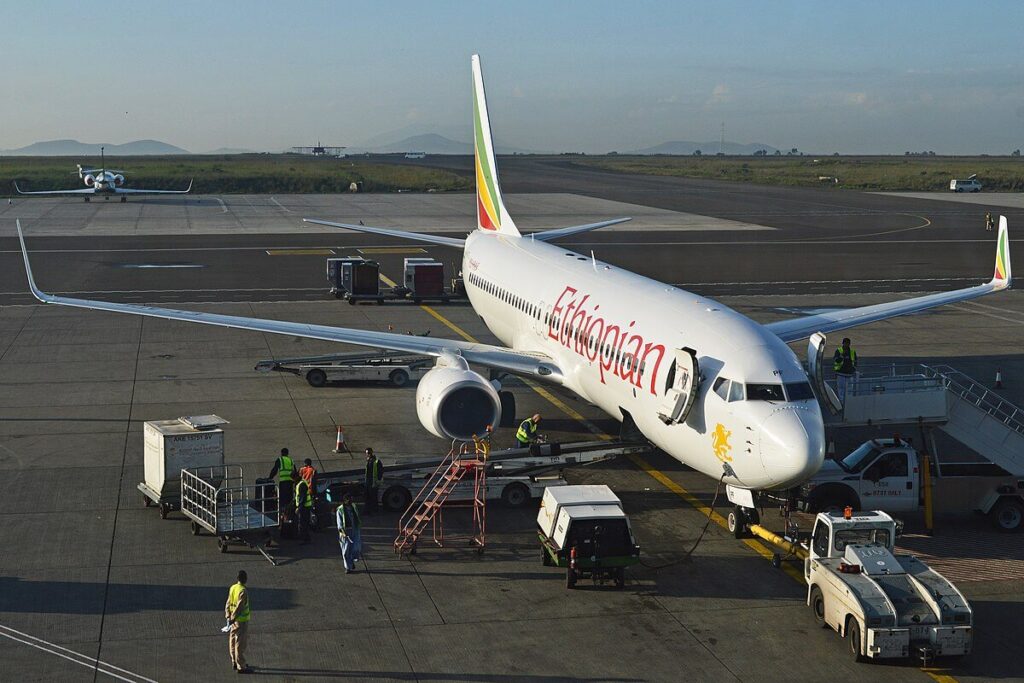Ethiopian Airlines Pilots Reactivated MCAS Just Before The Crash
Last month, a Boeing 737 MAX 8 crashed just outside of Addis Ababa, Ethiopia. The Ethiopian Airlines flight ET302 carried 157 people – 149 passengers and 8 crew members. Unfortunately, there were no survivors.
As time passed by, some shocking facts have resurfaced.
From pilots training to fly the aircraft type on iPads, to the fact that Boeing certified the MAX variant mostly themselves instead of the FAA. The United States Transportation Department, FBI and a Senate committee are all investigating the certification process.
Meanwhile, all the Boeing 737 MAX around the world are grounded – no airline has flown one since March 13th, after Canada, the US and Panama banned them from flying.
While the grounded aircraft are busy picking up dust, investigators, Boeing, Lion Air and Ethiopian Airlines are investigating the crashes. While the Indonesian investigators have already released their preliminary report, an identical report about the Ethiopian Airlines Flight ET302 is going to be released soon.
However, multiple sources have indicated that the MCAS, a system that is supposed to prevent accidents from happening, is at fault. If you’re interested to learn about MCAS, head over to an article right here.
But as a preliminary report about the Ethiopian Airlines accident is due to be released in a week, some insider information got leaked.
Ethiopian Airlines Pilots Turned MCAS Off And Then On
Following the Lion Air accident last October, Boeing issued a safety guide on how to disable MCAS and to regain control of the aircraft.
When the Ethiopian Airlines accident happened, everyone was puzzled. Boeing issued the guide to help pilots and no crashes happened ever since, as pilots now knew how to disable MCAS.
Boeing 737 MAX Cockpit
But sources close to the crash investigation have indicated that pilots disabled MCAS to stop the plane’s nose going down. After attempting to manually restore a proper Angle of Attack, the pilots restored power to electronic systems to help them to control the aircraft. Subsequently, that turned on MCAS which pushed the nose of the aircraft further down.
As a result, the Boeing 737 MAX 8 plunged into the ground.
Lack Of Hours
As soon as the news about the Ethiopian Airlines ET302 crash broke out, everyone suspected MCAS to be at fault.
However, the fact that the pilots turned on the electrical systems that enable MCAS to operate again might indicate another factor.
The lack of experience. The captain of the flight was the youngest flight captain in Ethiopian Airlines, but the captain accumulated over 8000 flight hours. The first officer, Ahmed Nur Mohammod Nur had only 350 flight hours logged.
Consequently, the lack of hours brings up the example of the Colgan Air Flight 3407 accident, which happened 10 years ago. Investigators concluded that the reasons behind the Flight 3407 accident were an incorrect response to instrument readings, fatigue and crucially, the lack of experience.
So, as a result, the families of the victims pushed for new safety laws in the United States, which included a law that prevented companies from hiring pilots that had less than 1500 flight hours logged. Airlines in the United States would not be able to legally hire the First Officer of the ET302 flight.
Nevertheless, these are just very preliminary reports that might showcase just one of the few factors on why the aircraft crashed. Everything will be much clearer when the Ethiopian investigators will release their preliminary report, which is due next week.
UPDATE: Ethiopian Airlines have released the preliminary crash report, which you can find HERE.

